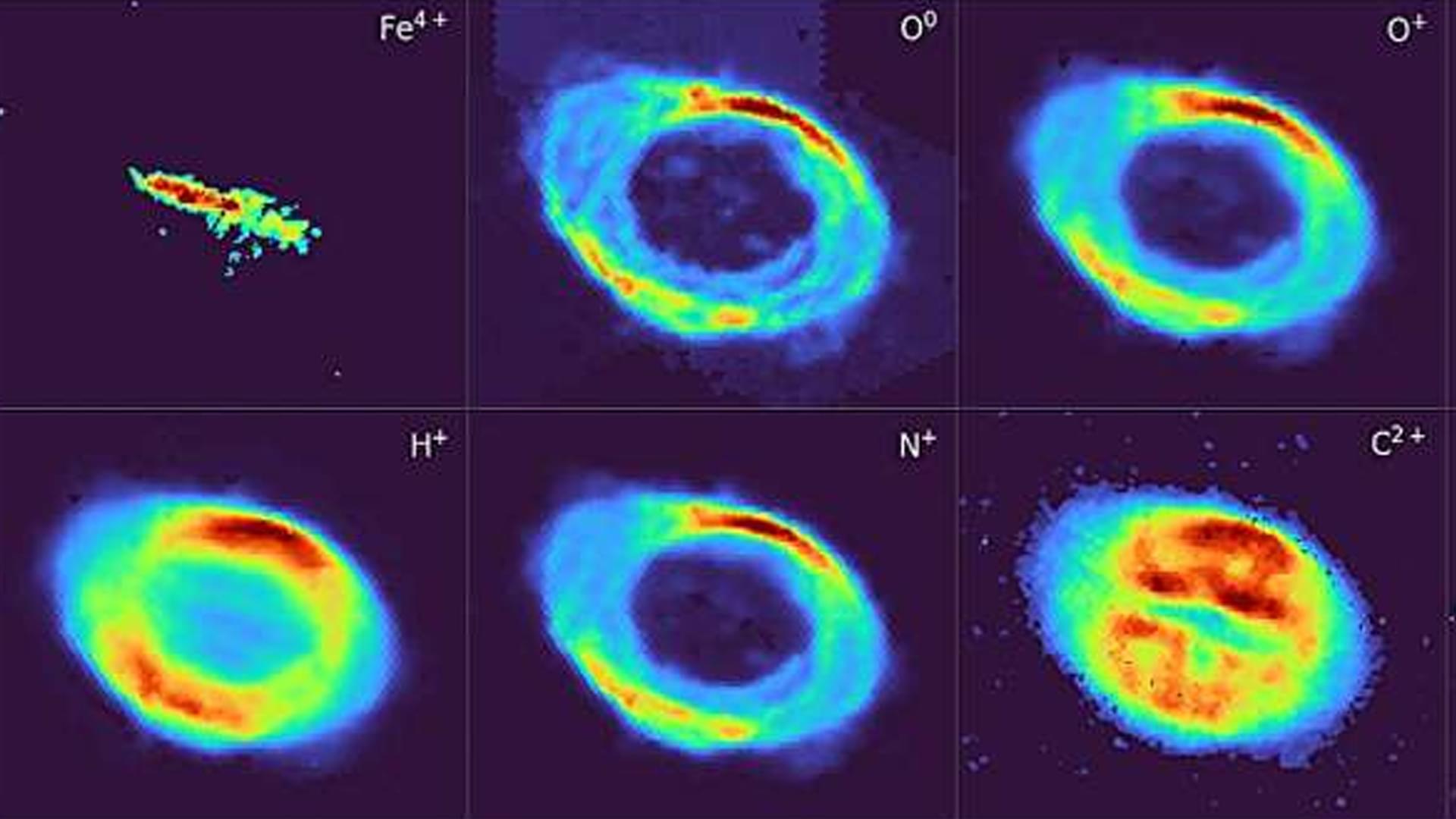Data center investment isn’t slowing down in the Austin area.




Georgetown University researchers have discovered a new class of strong magnets that do not rely on rare-earth or precious metals—a breakthrough that could significantly advance clean energy technologies and consumer electronics such as motors, robotics, MRI machines, data storage and smart phones.
A key figure of merit for a magnet is the ability of its magnetization to strongly prefer a specific direction, known as magnetic anisotropy, which is a cornerstone property for modern magnetic technologies.
Today, the strongest anisotropy materials for permanent magnets depend heavily on rare-earth elements, which are expensive, environmentally damaging to mine and vulnerable to supply-chain disruptions and geopolitical instability. For thin film applications, certain alloys of iron and platinum have become the materials of choice for next generation magnetic recording media, which contain precious metal platinum. Finding high-performance alternatives based on earth-abundant elements has therefore been a long-standing scientific and technological challenge.
The “Joining” seems to connect people via radio waves. Let’s dig into the physics at play.
Join us on Patreon! https://www.patreon.com/MichaelLustgartenPhD
Discount Links/Affiliates:
Blood testing (where I get the majority of my labs): https://www.ultalabtests.com/partners/michaellustgarten.
At-Home Metabolomics: https://www.iollo.com?ref=michael-lustgarten.
Use Code: CONQUERAGING At Checkout.
Clearly Filtered Water Filter: https://get.aspr.app/SHoPY
Epigenetic, Telomere Testing: https://trudiagnostic.com/?irclickid=U-s3Ii2r7xyIU-LSYLyQdQ6…M0&irgwc=1
Use Code: CONQUERAGING
NAD+ Quantification: https://www.jinfiniti.com/intracellular-nad-test/
From the introduction:
“The inside story of the AI breakthrough that won a Nobel Prize.
-
The Thinking Game takes you on a journey into the heart of leading AI lab DeepMind, capturing a team striving to unravel the mysteries of intelligence and life itself.
Filmed over five years by the award winning team behind AlphaGo, the documentary examines how DeepMind co-founder Demis Hassabis’s extraordinary beginnings shaped his lifelong pursuit of artificial general intelligence. It chronicles the rigorous process of scientific discovery, documenting how the team moved from mastering complex strategy games to solving the 50-year-old “protein folding problem” with AlphaFold — a breakthrough that would win a Nobel Prize.”
Please Like 👍 + Share ⭐ + Subscribe ✅
In this episode of the New Earth Entrepreneurs podcast, we sit down with John Cumbers, founder of SynBioBeta, to discuss how synthetic biology is reshaping industries and creating sustainable solutions.
John shares insights into the role of bio-manufacturing in decarbonizing supply chains, government initiatives supporting bio-innovation, and the potential for space applications of synthetic biology.
Learn how SynBioBeta is building a passionate community of changemakers to engineer a better, more sustainable world.
Learn more about SynBioBeta and their upcoming events at: www.synbiobeta.com.
Connect with John on LinkedIn: www.linkedin.com/in/john-cumbers-542220
The New Earth Entrepreneurs Podcast explores social entrepreneurship and corporate sustainability through engaging conversations with visionary leaders.
At SciCon 2024, John Cumbers, founder and CEO of SynBioBeta, explores the groundbreaking and controversial potential of synthetic biology and AI in brain and body replacement. He delves into stem cell research and AI’s role in regenerating brain function, while also addressing the provocative idea of gradually replacing parts of the brain and body. Cumbers discusses how these advancements could one day lead to life extension, challenging traditional views on aging, and raising ethical questions about the future of human biology.
SciCon (2024) is ResearchHub’s annual conference, which unites truth-seekers and innovators to push the boundaries of open science.
– ResearchHub’s mission is to accelerate the pace of scientific research. We are building a modern platform where people can collaborate on scientific research more efficiently, much like GitHub has done for software engineering. We believe scientific research should be accessible to everyone, collaborative, and prioritized.
Product: https://www.researchhub.com/
Website: https://researchhub.foundation/
GitHub: https://github.com/ResearchHub
The Intelligence Revolution: Coupling AI and the Human Brain.
New videos DAILY: https://bigth.ink.
Join Big Think Edge for exclusive video lessons from top thinkers and doers: https://bigth.ink/Edge.
Edward Boyden is a Hertz Foundation Fellow and recipient of the prestigious Hertz Foundation Grant for graduate study in the applications of the physical, biological and engineering sciences. A professor of Biological Engineering and Brain and Cognitive Sciences at MIT, Edward Boyden explains how humanity is only at its infancy in merging with machines. His work is leading him towards the development of a “brain co-processor”, a device that interacts intimately with the brain to upload and download information to and from it, augmenting human capabilities in memory storage, decision making, and cognition. The first step, however, is understanding the brain on a much deeper level. With the support of the Fannie and John Hertz Foundation, Ed Boyden pursued a PhD in neurosciences from Stanford University.
EDWARD BOYDEN:
Edward Boyden is a professor of Biological Engineering and Brain and Cognitive Sciences at the MIT Media Lab and the McGovern Institute for Brain Research at MIT. He leads the Media Lab’s Synthetic Neurobiology group, which develops tools for analyzing and repairing complex biological systems, such as the brain, and applies them systematically both to reveal ground truth principles of biological function and to repair these systems.
These technologies, often created in interdisciplinary collaborations, include expansion microscopy (which enables complex biological systems to be imaged with nanoscale precision) optogenetic tools (which enable the activation and silencing of neural activity with light,) and optical, nanofabricated, and robotic interfaces (which enable recording and control of neural dynamics).
Boyden has launched an award-winning series of classes at MIT, which teach principles of neuroengineering, starting with the basic principles of how to control and observe neural functions, and culminating with strategies for launching companies in the nascent neurotechnology space. He also co-directs the MIT Center for Neurobiological Engineering, which aims to develop new tools to accelerate neuroscience progress.
This is a ~50 minute video on evolution from the perspective of diverse intelligence. I discuss 3 main things: the nature of the mapping between genotype and phenotype (an intelligent, problem-solving process that interprets genomic prompts, not simply a complex mechanical mapping), the implications for evolution of operating over such a multi-scale agential material, and a few recent findings about the origin of the intelligence spiral taking place before differential replication dynamics kick in.
Editing by https://twitter.com/DNAMediaEditing